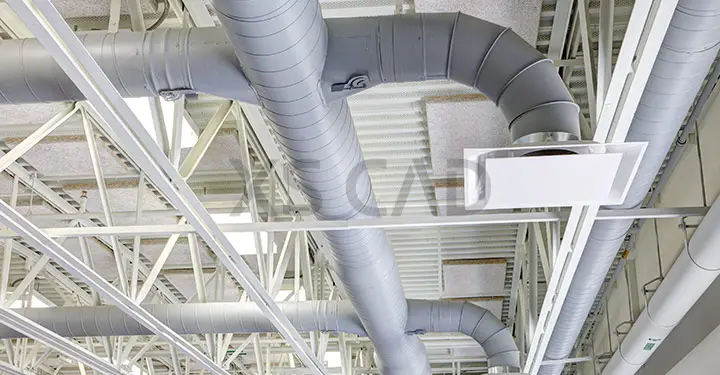Our Articles

Can Effective Building Engineering Design Support Sustainability?
Everyone in the construction industry is thinking about it, if not talking about it – sustainability, the not-so-new buzzword with a new urgency. As the world faces the new normal on so many levels, construction processes are turning towards the promise of a greener tomorrow with an immediate focus on building engineering design to support sustainability. High-quality HVAC engineering services, especially HVAD ductwork design, can offer much-needed sustainable design support.
But then, what are the basic features of sustainable building design?
Sustainable Building Design Principles
Although sustainability in construction can be generalised as building design and processes that are good for the environment in the long run, it can be pinned down to a few specifics, such as optimising the following:
Site Potential
For greater success in an environmentally sustainable outcome, site design must begin with proper site selection, even in case of building renovation. Location, orientation and landscaping can affect energy consumption, methods of transportation and local ecosystems. The aim should be to reduce, control or treat storm-water runoff while simultaneously supporting native vegetation.

Energy Use
Building engineering design must aim for energy independence in new buildings and improving the energy performance in existing buildings. Net zero energy buildings, or those buildings that generate as much energy as is used, move nearer to an ideal state of non-dependence on fossil fuel-derived energy.
Water Protection and Conservation
Fresh water stock can be preserved by efficient sustainable building design. encouraging water recycling during construction and after.
Building Space and Material Use
A sustainable building can be designed and operated to use and reuse materials during its entire life cycle.
Utilizing sustainable materials can help reduce global warming, preserve resources and reduce toxic emissions. environmentally preferable materials reduce impacts on Health and worker safety can be improved, while incurred liabilities cam be reduced.
Indoor Environmental Quality (IEQ)
Modifications in HVAC design can help improve indoor air quality, health, comfort and productivity. Optimising daylighting, acoustics, monitoring and controlling ventilation and moisture control through the use of green building MEP services can have a significant impact on indoor environmental quality.
Operations and Maintenance
Engineers, architects and site contractors can collaborate to identify materials and systems that simplify building operations and reduce maintenance costs. These systems can reduce water and energy requirements, thus reducing life-cycle costs.
So, how do we incorporate these principles of sustainability into building engineering design?
Carefully, accurately and with clear planning, while keeping an eye on potential future developments.
Sustainability can be a value-added MEP asset in building design, as sustainable buildings save considerable operating expenses. Building engineering must focus on constructing strong, lasting buildings using renewable energy sources and eco-friendly materials, minimising carbon footprints.
One of the ways that MEP contractors are making sustainability a value-added asset to MEP design is by using BIM (Building Information Modelling) technology. While using BIM processes, analysis and sensors, it becomes simpler to collate environmental data, set up new energy standards and represent it in a 3D model.
Generally, using BIM models benefits sustainable MEP design in a number of ways, such as:
Some of the more modern devices and methods that support sustainability in MEP systems are:
To know more about building engineering design support . . .
Increasingly, building engineering services may need to incorporate the reduction of environmental impacts and cost of resources in their output. Enhancing the health and comfort of building inhabitants can be achieved in new ways by adopting sustainable practices in building engineering design, benefiting the environment and purse strings. Knowledgeable, reliable and accurate MEP engineering design for sustainability can be sourced through established engineering design services companies can make these goals possible.
XS CAD has valuable experience providing MEP engineering design services and sustainable design support for general contractors and design consultants. Our range of services for building design firms across the world include HVAC ductwork design, green building MEP services and other HVAC engineering services, and we offer retained teams when required. We create these models, and drawings by using Revit, AutoCAD and BIM 360 Design for cloud collaboration.

